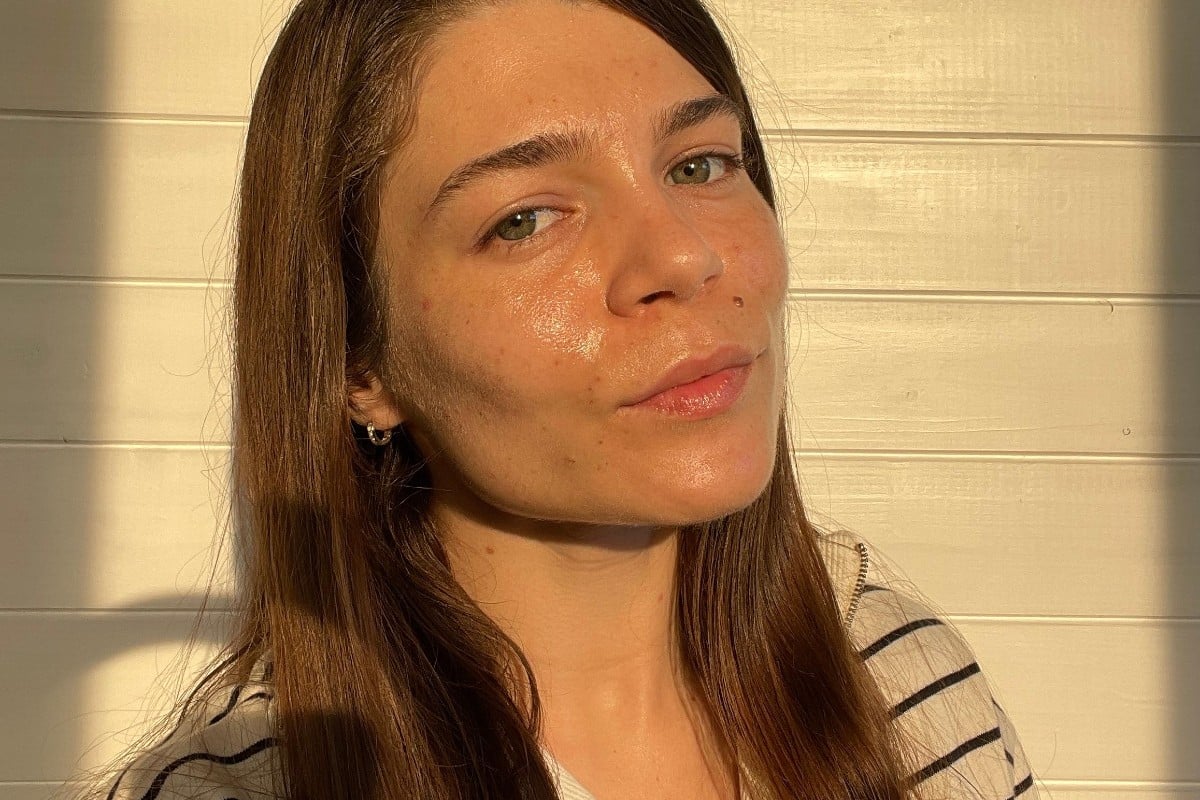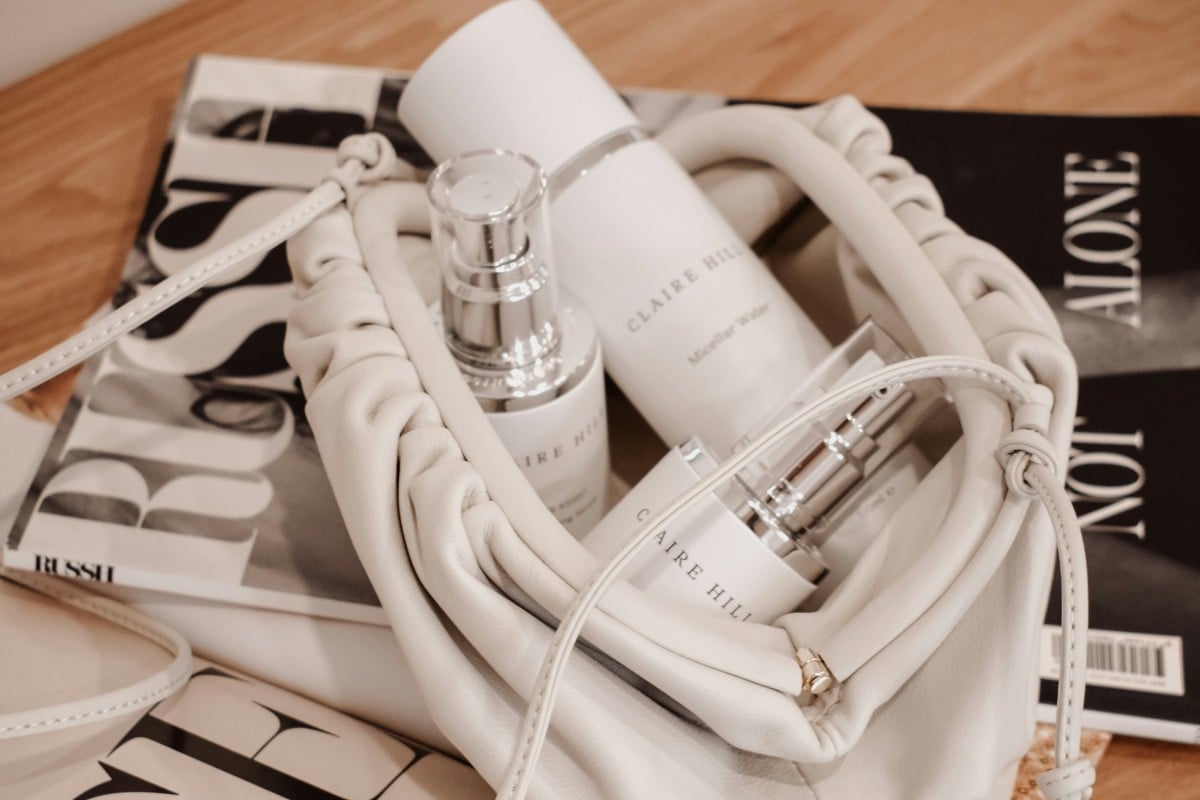- How do moisturizers work
- Types of moisturizers
- Forms and textures of moisturizers
- Water-based vs. oil-based moisturizers
- How to choose the right moisturizer
- How and when to use moisturizer
- How often to moisturize
- Best products
This article has been reviewed by Dr. Luisa Fanzani, a Los Angeles-based cosmetic chemist dedicated to educating people on skincare.
Attaining healthy skin is more than just applying a random moisturizer. It’s more about understanding the different types of moisturizers and figuring out what works best for your skin and the climate you live in—because yes, the weather affects your moisturizer needs. Are you better off with an oil-based or water-based formula? Would your skin prefer a rich cream or a light gel? Also, it’s crucial to understand the roles of occlusives, humectants, and emollients in skin hydration. So, before you choose your next moisturizer, let’s get these questions sorted.
How do moisturizers work
A moisturizer is a product that hydrates the skin. Simple, right? But the reality is a bit more complex than that. Moisturizers come in various forms and textures—like creams, lotions, gels, and ointments—and contain different moisturizing ingredients—like humectants, occlusives, and emollients. You’d think that the effectiveness of a moisturizer comes down to what’s in that bottle. While this is true, the climate you live in and the condition of your skin are also key players in the equation.
Another common belief is that all moisturizers increase skin hydration. However, the truth is only the humectants are doing the heavy lifting. These are your hydration magnets—they pull moisture from the air right into your skin. On the other hand, emollients and occlusives serve different purposes. Emollients work by smoothing the skin and filling in cracks between cells to create a soft texture. Occlusives, meanwhile, act as a barrier on the skin’s surface to hold hydration and make sure the skin is not losing moisture.[1]
While a well-rounded moisturizer often combines emollients, occlusives, and humectants to provide both immediate and lasting hydration and to soothe and comfort the skin, it’s not a one-size-fits-all solution.
The effectiveness of these ingredients varies depending on your skin condition. For instance, if you have oily skin, you might find that lightweight humectants work best as they hydrate without adding extra oil. On the other hand, dry skin often requires the richer, moisture-sealing properties of occlusives and emollients. Moreover, factors such as acne, a weak skin barrier, dry patches, redness, sensitivities, and even the climate you live in affect how well a moisturizer works for you.
Types of moisturizers
Moisturizers fall into three main categories: humectants (attract moisture), occlusives (seal in moisture), and emollients (soften dry patches).[1]
Occlusives
Occlusives are oils and waxes that cover the surface of the skin with a moisture-sealing film. Their job is to block transepidermal water loss (TEWL). This is a continuous, natural process that occurs throughout the day in which moisture evaporates from the skin to the outside environment. Because they have to sit on the surface, occlusives have large molecules that cannot penetrate the skin. They are heavier than other moisturizers and can leave a greasy or sticky residue if not washed off properly.
Common occlusives found in skincare include mineral oil, petroleum jelly, beeswax, shea butter, squalane, silicones, and zinc oxide.[1] Of all, petrolatum is the most effective occlusive moisturizer. According to research, at a concentration of 5%, petrolatum can reduce moisture loss by more than 98%.[4] Lanolin, mineral oil, and silicones are also effective occlusives and can reduce TEWL by 20% to 30%.[1]
Thanks to their moisture-sealing abilities, occlusives do best for dehydrated, cracked skin and are a go-to in cold winter months when the air humidity levels are low. On the other hand, some occlusives aren’t suitable for people with oily and acne-prone skin since they are sticky, have a greasy feeling, and can potentially clog the pores and trigger breakouts.
Related: 10 Best Occlusive Moisturizers
Humectants
Humectants are like tiny magnets for moisture. They’re hygroscopic molecules that absorb moisture from the air and draw it right into the skin. They’re the only moisturizers that boost hydration in your skin cells.[2] Humectants are lightweight, non-greasy, absorb fast, and are ideal for everyone, especially for oily and acne-prone skin. You’ll find humectants in all kinds of moisturizers, but they’re especially common in lotions and gels.
Common humectants in skincare include hyaluronic acid, urea, panthenol, glycerin, alpha-hydroxy acids (glycolic acid, lactic acid), betaine, polyglutamic acid, aloe vera, and honey.[1] Some humectants like hyaluronic acid are also part of natural moisturizing factors (NMF), which is a complex of molecules and the skin’s natural system to retain moisture.
We should point out that humectants only work best when the air is fairly humid—about 70% humidity or more. However, in drier climates, where the air humidity is below 70% (which is common in the colder months), humectants may start pulling moisture from the deeper layers of your skin instead. This can lead to your skin losing moisture and becoming dry.[2] To overcome this, use humectants with occlusives. Occlusives create a barrier on the skin’s surface to lock in moisture so the humectants can still do their job without the risk of drying out your skin. Another solution is to use an air humidifier to increase the humidity level and maintain it above 60%.
Related: 9 Best Humectant Moisturizers
Emollients
Emollients are fatty substances and mineral oils with skin-softening properties that work by filling all the cracks and spaces between the skin cells.[1] These substances are similar to our skin’s own fats. What emollients do is restore the skin’s fat layer (aka the skin barrier). This action not only hydrates the skin, but also reduces inflammation, rough patches, itching and scaling associated with eczema and similar dry skin conditions.
Examples of emollients include vitamin E, ceramides, shea butter, cholesterol, squalane, colloidal oatmeal, dimethicone, and oils rich in fatty acids such as jojoba, castor, olive, and coconut.
Related: 9 Best Emollient Moisturizers
Forms and textures of moisturizers
Moisturizers come in different forms and textures, including lotions, creams, ointments, and gels, each with a different consistency:
- Lotions: Lotions contain humectants, are lightweight and water-based, are easily absorbed, and are ideal for normal to slightly dry skin.
- Creams: Creams are made of heavier occlusives and emollients and are thicker than other moisturizers but not as thick as an ointment.
- Ointments: Ointments are oil-based, greasy, and leave a glossy look; they’re effective in areas with low air humidity (under 60%).
- Gels: Gels are oil-free and have the lightest consistency of all moisturizers, making them a favorite for oily or acne-prone skin.
Water-based vs. oil-based moisturizers
When we say a moisturizer is water-based, it means the base of the product (the first ingredient found in the highest concentration) is water. These moisturizers are usually lightweight and absorb into your skin super quickly. They’re perfect if you have oily or acne-prone skin because they hydrate without adding extra oil. Plus, they often contain humectants—ingredients like glycerin or hyaluronic acid—which provide the perfect amount of lightweight hydration without clogging pores or leaving greasy residues.
By the same token, oil-based moisturizers have oils as the base. Unlike water-based moisturizers, oil-based moisturizers are thicker and heavier in texture and contain occlusive emollients. They’re ideal for dry, dehydrated skin or a broken skin barrier. Oil-based moisturizers are also perfect during the cold season or in places with low air humidity, as their thick texture can better reduce moisture loss in unfavorable weather conditions.
How to choose the right moisturizer
- Normal skin: For normal skin, a lightweight gel or lotion is enough to maintain skin hydration. However, in case you’re experiencing excessive dryness, you should use a cream formula filled with emollients to soften and sooth your skin.
- Dry skin: Creams and ointments are the best picks for dry skin as they are thicker and preserve more moisture than gel formulas. Also, people with dry skin should use a combination of occlusives, humectants, and emollients.
- Oily skin: Humectants are best for oily skin. On the other hand, oily skin should avoid heavy occlusives as they can clog pores. Instead, it should aim for non-comedogenic gel moisturizers as they are light and don’t feel greasy.
- Combination skin: If you have combination skin, you can use pretty much anything but should avoid putting heavy occlusives on the T-zone.
- Sensitive skin: Sensitive skin is best off using a hypoallergenic moisturizer and should avoid formulas with alcohol and fragrances.
- Broken barrier (redness, irritation, dryness): Regardless of your skin, when you experience a damaged barrier, you should change your moisturizer to meet your skin’s current needs. A broken barrier is seen as irritation, dry patches, and redness, and it’s best to apply emollients to restore it. For instance, SkinCeuticals Triple Lipid Restore 2:4:2 contains a cocktail of emollients and is a great product to have on hand when your skin’s barrier is troubled.
How and when to use moisturizer
For starters, you should apply moisturizer at least once a day, in the morning. The moisturizer will hydrate your skin and protect it from the environmental stressors it will face throughout the day. Apply the moisturizer after the cleanser, toner, and serum, and before sunscreen. It’s a priority to use the moisturizer before your skin is completely dry because it will make the product more spreadable and effective. If you have dry skin, it’s a good idea to also moisturize at night.
Most experts recommend having two different moisturizers for the day and night routine. This is because the skin needs a lightweight, protective formula that gives long-lasting hydration for the day, while for the night, it needs reparative and replenishing ingredients.
How often to moisturize
Depending on your skin condition and environmental factors, you need to use moisturizer between one to three times a day. Only 50% of the moisturizer remains on the skin surface after 8 hours, so if you’re dealing with excessive dryness, it’s best to moisturize three times a day.[1]
Best products
References
At Women’s Concepts, we’re committed to the highest standards of accuracy and research. We meticulously source our information from credible sources like scientific journals and clinical trials. Every statement and claim in our content is backed by clear references. To understand more about our sources of information and fact-checking process, we invite you to read our editorial policy.
- Purnamawati S, Indrastuti N, Danarti R, Saefudin T. The Role of Moisturizers in Addressing Various Kinds of Dermatitis: A Review. Clin Med Res. 2017 Dec;15(3-4):75-87. doi: 10.3121/cmr.2017.1363. Epub 2017 Dec 11.
- Harwood A, Nassereddin A, Krishnamurthy K. Moisturizers. Treasure Island (FL): StatPearls Publishing; 2022 Jan-. Available from: https://www.ncbi.nlm.nih.gov/books/NBK545171/
- “Occlusives.” Cosmeceuticals and Cosmetic Ingredients Ed. Leslie Baumann. McGraw Hill, 2015, https://dermatology.mhmedical.com/content.aspx?bookid=2812§ionid=244978020.
- Ghadially R, Halkier-Sorensen L, Elias PM. Effects of petrolatum on stratum corneum structure and function. J Am Acad Dermatol. 1992 Mar;26(3 Pt 2):387-96. doi: 10.1016/0190-9622(92)70060-s. PMID: 1564142.





